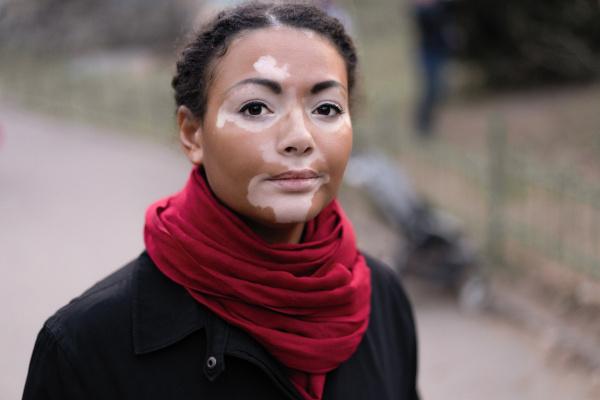O vitiligo is a non-contagious disease characterized by the appearance of areas without pigmentation on the skin, which are seen as white patches of varying sizes and shapes.Os. Although it can impact self-esteem, vitiligo is not responsible for causing damage to the patient's physical health. He it can affect people of any race, sex and age.
Read too: Skin — the largest organ in the human body
What is vitiligo?
Vitiligo is a disease in which the loss of skin color (skin lesions of hypopigmentation). The loss of color is a consequence of a reduction or absence of cells responsible for the production of melanin, known as melanocytes. The disease does not cause serious consequences to the patient's health, but many develop emotional problems, and in many cases, a drop in the patient's self-esteem is observed.

Vitiligo symptoms
The main symptom of vitiligo is the appearance of skin blemishes. Many patients have no symptoms other than these lesions, but in some cases the affected area may be painful and tender. However, it is worth noting that, in most cases, these lesions do not itch, do not hurt and also do not flake off.
At limpHbut may appear small and increase in size over time. In addition, new spots may appear, which, occasionally, can lead to complete involvement of the body. In addition to blemishes, fur and hair can also turn white.
Types of Vitiligo
The Brazilian Society of Dermatology classifies vitiligo in two types: segmental or unilateral and non-segmental or bilateral. O segmental vitiligo it manifests itself in only one part of the body. O not segment, in turn, manifests itself on both sides of the body, affecting, for example, both hands, both knees. Usually, the spots start at the extremities, such as the nose, mouth, feet and hands. In this type of vitiligo, there are times when the disease develops and periods when it stagnates. Unpigmented areas tend to become larger over time, as does the length of cycles. It is characterized as the most common type.
Read too: The chemistry involved in skin color
Causes of Vitiligo
Until now, the causes of vitiligo are not completely known. Apparently the disease is related to autoimmune phenomena and also genetic factors, being observed that about 20% of patients with vitiligo have at least one first-degree relative with the problem.
Furthermore, emotional problems may be among the factors that trigger or aggravate vitiligo. Environmental factors, such as exposure to sunlight and pesticides, can be considered triggers of the disease in those patients who have a genetic predisposition.
Did you know that the World Day to Combat Vitiligo is celebrated in June 25th? The date was chosen because it is the anniversary of the death of Michael Jackson, one of the best known people who had the disease. |
vitiligo diagnosis
The diagnosis of vitiligo is based only on the clinical examination of the patient, since the lesions on the skin are quite characteristic. The performance of biopsies demonstrates the absence of melanocytes in the affected region, which explains the absence of pigmentation.
Vitiligo treatment
Vitiligo treatment is not aimed at curing the disease, but it can help to stabilize the condition and even ensure a repigmentation of the skin. The dermatologist may recommend different procedures, such as the use of drugs that induce repigmentation, phototherapy, laser treatment, surgical techniques or melanocyte transplantation. As the disease does not compromise the individual's physical health, the treatment presents aesthetic character.
To help disguise the stains, it is important to highlight that there are currently many makeups indicated for this purpose, which is also an alternative for those who prefer to mask the problem.

Vitiligo prevention
Unfortunately, vitiligo is a disease that there is no way of prevention. However, it is important that everyone is aware of the variations that can occur in the skin. Any changes must be monitored by a dermatologist, as early interventions can help stabilize the condition.
By Vanessa Sardinha dos Santos
Biology teacher


